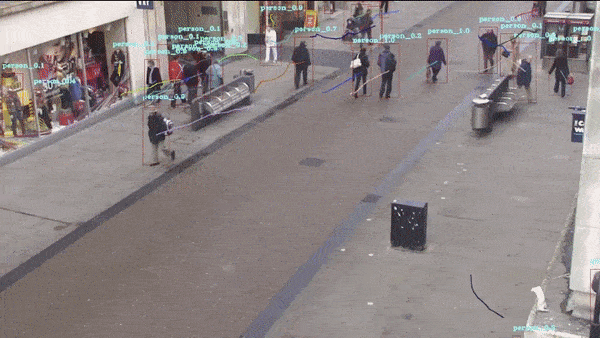What are Movement Heat Maps?
Heat maps are an intuitive visualization to analyze footfall and movement of pedestrians. Deep learning algorithms are used to detect and track individuals in videos of common CCTV surveillance cameras.
Real-time imaging tracks movements and assigns colors corresponding to traffic volume to different areas to identify points of interest and know where visitors or pedestrians are gathering.
Key Features of Movement Pattern Recognition
People detection and tracking for heat map analysis provide a scalable way to analyze people’s movement patterns indoors and outdoors.
- Real-time object detection algorithms detect and track people in video streams.
- The people’s trajectories are visualized as heatmaps to analyze complex situations.
- Compare changes over time to measure the effectiveness of measures to impact the tracked movement.
- Vision-based heatmaps allow people and vehicle analytics in a contactless, non-invasive manner.
- Edge AI computer vision processing allows private on-device processing of all visuals (no visual data is sent to the cloud).
Value of Automated Heat Mapping
Computer Vision heat maps provide a scalable approach to automatically analyze crowds in indoor and outdoor environments.
- Automated gathering of intuitive heatmaps of multiple locations using traditional surveillance cameras.
- Insights about footfall help to measure the effectiveness of marketing campaigns and optimize product placement inside stores.
- Heat maps provide valuable insights to optimize the layout of areas in smart cities to improve safety and traffic flow
- Operational efficiency can be improved by tracking changes over time, finding anomalies, and detect hot spots and bottlenecks.
- Save costs by automating marketing analysis and optimizing the layout of the point-of-sale.
